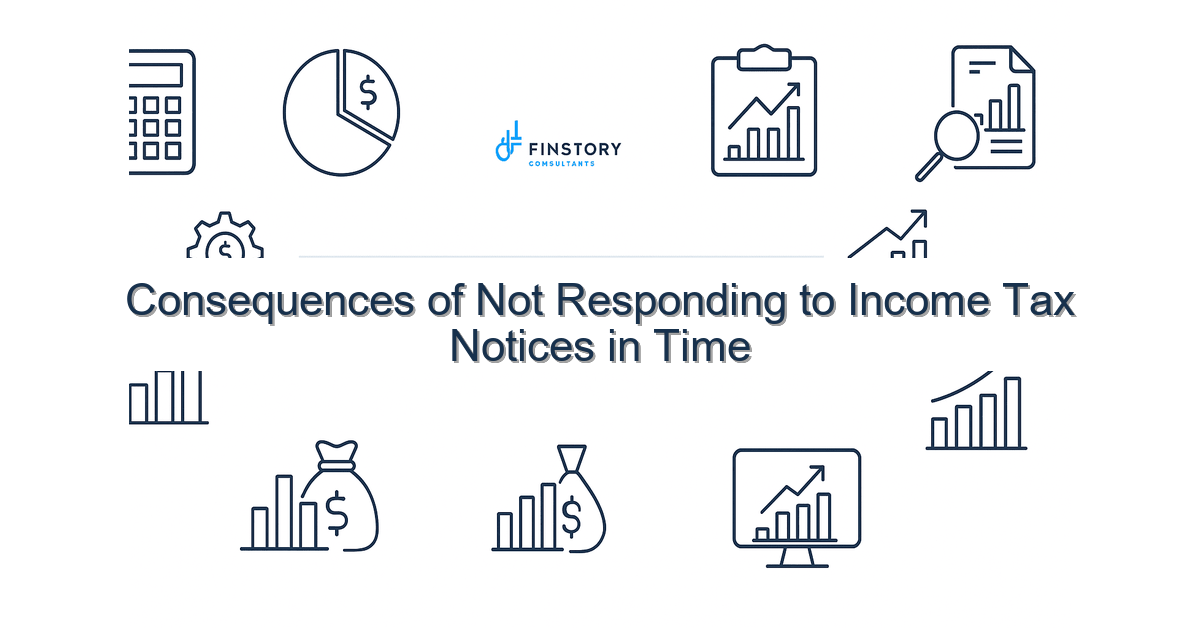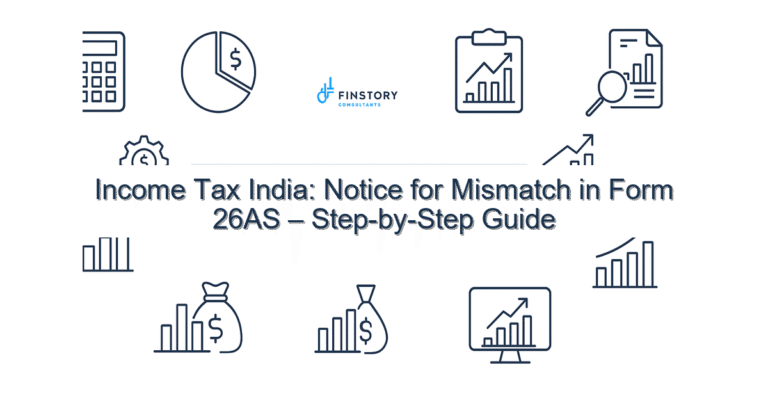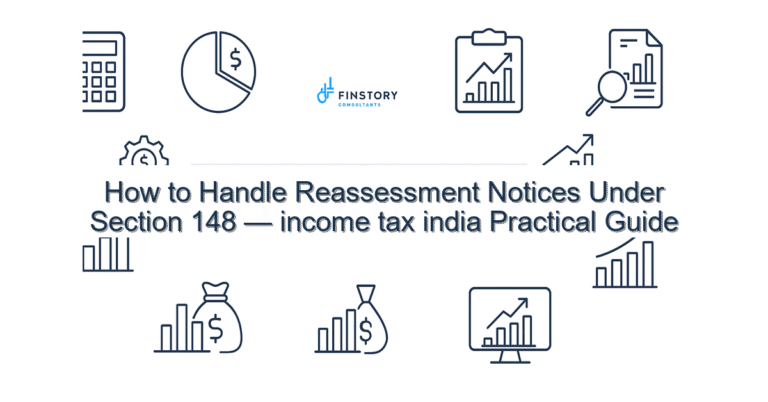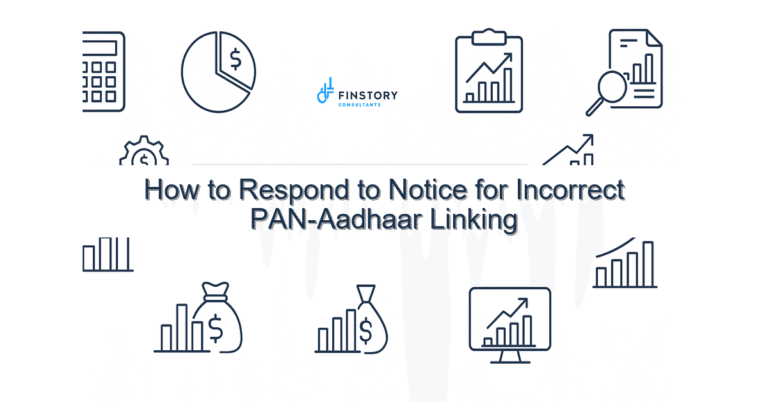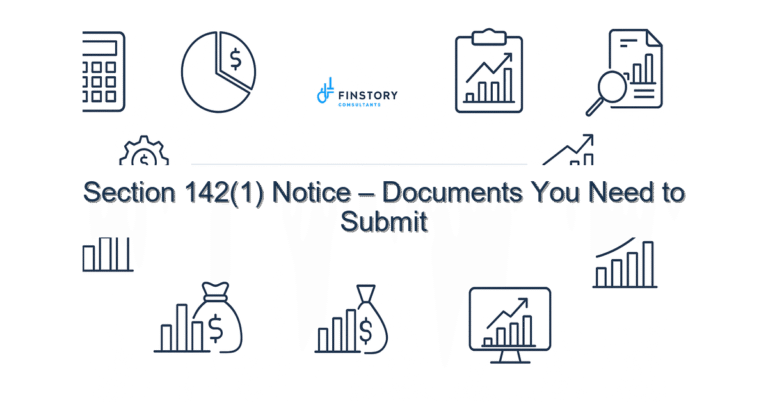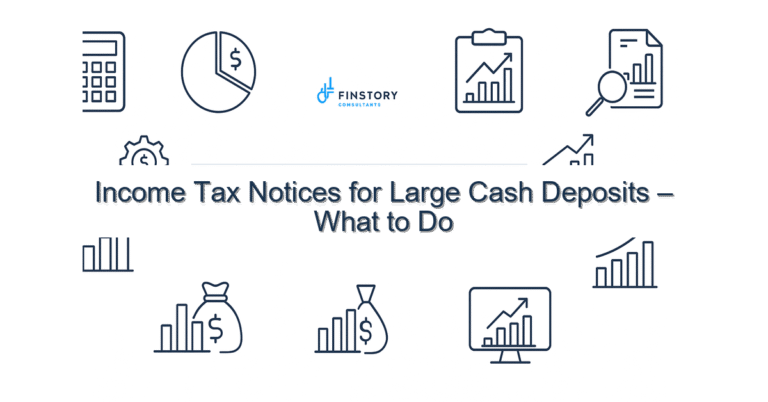Consequences of Not Responding to Income Tax Notices in Time
We know the panic when an email or physical letter from the income tax department lands in your inbox—especially during busy months around ITR filing last date or year-end crunch. Missing the reply deadline is easy, and the consequences can multiply quickly. You don’t have to navigate this alone.
Summary: If you don’t respond to income tax notices in time, you risk interest, penalties, reassessment, frozen refunds and potentially prosecution; quick action, documentation and expert help can limit financial and legal exposure.
What’s the real problem in India?
Not responding to notices is often not about ignorance of tax rules but about timing, uncertainty and complexity. Indian notices reference terms and forms (AY/PY, Notice u/s 142(1), intimation u/s 143(1), notice u/s 148) and sometimes expect replies through the e-filing portal or prescribed forms within strict CBDT timelines. For salaried individuals, professionals, founders and MSMEs, this becomes more confusing when TDS/TCS entries on AIS/26AS or mismatches in Form 26AS aren’t reconciled.
- Symptom: You see a mismatch between your Form 26AS/AIS and your ITR or payslips.
- Symptom: You missed the ITR filing last date and later received a demand or penalty notice.
- Symptom: A notice asks for proof of exemptions like Section 80C limit investments or capital gains indexation documents.
- Symptom: You’re a startup founder or MSME and notices mention unexplained credits or round-tripping entries.
What people get wrong
Many taxpayers assume that ignoring a notice will make it go away or that a late reply will be treated leniently. Common pitfalls:
- Delaying response until panic mode — losing the window to file required explanations or objections.
- Providing incomplete documentation — e.g., not attaching Form 16, proof for Section 80C limit claims, or TDS/TCS certificates to reconcile AIS/26AS.
- Using incorrect channels — replying by email instead of via the e-filing portal or not quoting the correct notice reference or AY/PY.
- Assuming ITR revision can always fix a notice — some notices (like u/s 148) require specific actions beyond a revised ITR.
A better approach
Responding promptly and methodically reduces risk. Use this 4-step framework:
- Identify the notice: Note the section (e.g., 143(1), 142(1), 148), AY/PY and the response deadline stated by the CBDT.
- Reconcile data: Compare notice claims with AIS/26AS, Form 16/16A, bank statements, investment proofs (for Section 80C limit), and capital gains computations with indexation.
- Draft a clear response: Attach supporting documents, cite relevant law, and submit through the correct channel (e-filing portal or specified office).
- Escalate if needed: If the notice is complex (reassessment, penalties or possible prosecution), get a tax professional to file objections or appear before the assessing officer.
Real-world example: A Mumbai-based software engineer missed a TDS entry in AIS/26AS because his employer filed a correction late. He got a notice u/s 143(1). By promptly reconciling Form 26AS, uploading the revised Form 16 and responding via the e-filing portal within 10 days, he avoided penalties and got the processing error corrected — refund processed within 45 days.
Quick implementation checklist
- As soon as you get a notice, read it fully and note the deadline and section cited.
- Download your AIS/26AS and compare TDS/TCS entries with your payslips and bank statements.
- Collect documents: Form 16/16A, investment proofs (PF, PPF, ELSS receipts for Section 80C limit), bills for claimed expenses, capital gains statements with indexation calculations.
- Check whether the notice is an intimation (143(1)) or a notice asking for information (142(1)) — different responses are required.
- Prepare a cover letter addressing each point in the notice, with numbered attachments matching the queries.
- Upload response and attachments via the income tax e-filing portal, or follow the notice instructions for physical submission.
- If the notice concerns an earlier ITR year, confirm AY/PY and whether you need to revise the return or file an objection.
- Set reminders to follow up: check the e-filing portal for processing status and watch AIS/26AS for corrected entries.
- If unsure, contact a tax advisor immediately — small delays can increase interest and penalty exposure.
What success looks like
When you act on notices quickly and correctly, measurable outcomes include:
- Reduced penalty amounts or avoided penalties entirely.
- Lower interest accrual on outstanding tax demands.
- Faster ITR processing and refunds — fewer stuck or intimation cases.
- Fewer repeat notices year-on-year and better AIS/26AS reconciliation.
- Greater confidence applying tax-saving options like correct Section 80C limit claims or choosing between new vs old regime slabs appropriately.
Risks & how to manage them
Risk: Interest and penalties grow with delay. Management: Respond and document immediately; if you can’t pay, apply for installment or stay of demand with the tax officer.
Risk: Reassessment (notice u/s 148) or penalty proceedings under sections for concealment. Management: Keep accurate records of capital gains indexation, receipts for deductions, and consult a specialist to prepare legal objections.
Risk: Prosecution in extreme cases. Management: Early professional intervention to negotiate, settle under VDA or file necessary appeals.
Tools & data
Use trusted tools and portals to speed up responses and reduce errors:
- Income Tax e-filing portal — file responses, submit revised returns and track notices.
- AIS/26AS download for complete TDS/TCS and tax credit reconciliation.
- TDS/TCS tracking tools or payroll reconciliations for employers and professionals.
- Capital gains calculators that handle indexation, cost inflation index and multiple asset sales.
- Secure cloud storage for proofs — Form 16, investment receipts, bank statements and invoices.
FAQs
Q: What happens if I miss the ITR filing last date and then get a notice?
A: You may face interest under relevant sections and possibly penalties. Respond to the notice, file or revise your ITR and reconcile AIS/26AS. Prompt action reduces penalties and speeds refunds.
Q: My Form 26AS shows TDS that I didn’t receive. How should I respond?
A: Reconcile with Form 16/16A and employer/bank. If TDS was wrongly credited, collect an amended TDS certificate or employer declaration and upload it with your notice response.
Q: Can I settle a disputed tax demand?
A: Yes — via depositing the disputed tax and filing an appeal or applying for stay/instalment. For complex reassessments, get professional help to prepare objections and appeals.
Q: Do I need to respond to every intimation?
A: Not all intimations require action, but review them against your records. If the intimation shows no discrepancy or is auto-calculated correctly, keep documentation. If there’s a mismatch, reply promptly through the e-filing portal.
Next steps
If you’ve received a notice, don’t wait. Start by downloading AIS/26AS, gathering Form 16/16A and investment proofs, and preparing a clear response. If the notice mentions reassessment, penalties or large unexplained entries, speak to an expert.
[link:ITR guide] [link:tax-saving tips] — Need help now? Our team specialises in income tax india matters for salaried employees, professionals, founders and MSMEs.
Work with Finstory. Speak with an Expert for a personalised plan to reduce your tax outgo and stay compliant. Book a free 20-min consultation.
📞 Need help with Income Tax in India?
Book a 20-min consultation with our tax team. Individuals, founders & MSMEs welcome.
Prefer email or phone? Write to info@finstory.net
or call +91 44-45811170.
